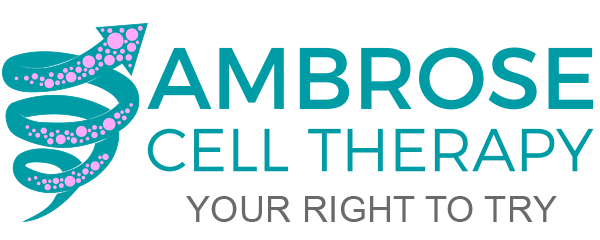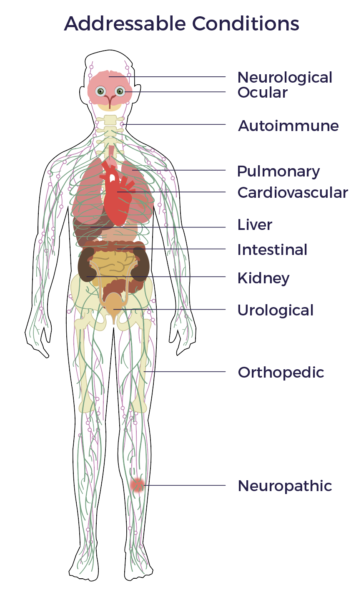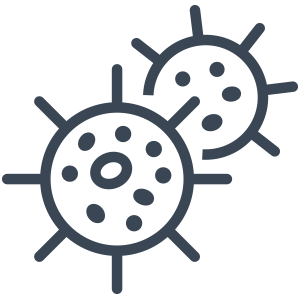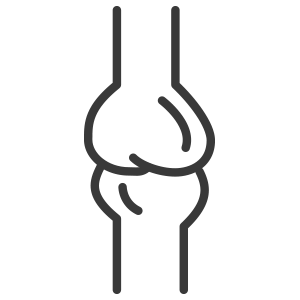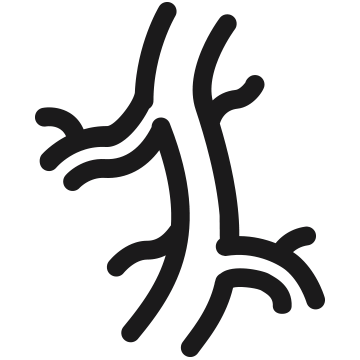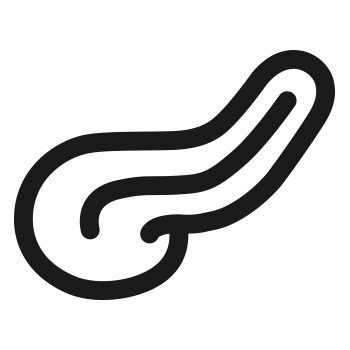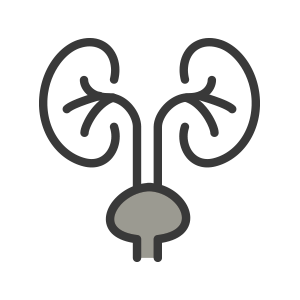Áreas de interés
Cientos de estudios con células madre y regenerativas derivadas del tejido adiposo (CMDA) -desde ratones y animales grandes hasta seres humanos- sobre un amplio espectro de afecciones han informado de su seguridad y de indicios de eficacia para mejorar los síntomas, la función y la calidad de vida de pacientes con enfermedades crónicas degenerativas. [1] [2] [3]
Los siguientes son ejemplos clave de áreas en las que nos estamos centrando actualmente con el uso de tratamientos experimentales con células madre adultas para pacientes a los que se les ha diagnosticado una enfermedad terminal o una enfermedad crónica grave.
Para saber más sobre cómo convertirse en paciente de AMBROSE Cell Therapy, por favor pulse aquí.
Autoinmune
Trastornos inmunomediados como la artritis reumatoide, la esclerosis múltiple y el lupus.
Ortopedia
Lesiones deportivas, artrosis, dolor de espalda y otros problemas musculoesqueléticos.
Neurológico
Por ejemplo, Parkinson, Alzheimer, traumatismos craneoencefálicos y accidentes cerebrovasculares.
Neuropatías
Disfunción de los nervios periféricos que provoca dolor, entumecimiento y pérdida de función.
Diabetes
Tanto la diabetes de tipo 1 como la de tipo 2, así como las complicaciones y síntomas relacionados.
Enfermedad renal
Enfermedad o insuficiencia renal crónica que conduce a la pérdida gradual de la función de los órganos.
EII
Enfermedades inflamatorias intestinales como la colitis ulcerosa, la enfermedad de Crohn y el síndrome del intestino irritable.
Salud masculina
Cuestiones que afectan a los hombres, como la hiperplasia benigna de próstata, la disfunción eréctil y otras.
Lesión medular
Nuestro objetivo es mejorar los síntomas, la función y la calidad de vida tras las lesiones medulares.
[1]JK Fraser PhD y S. Kesten MD Células regenerativas autólogas derivadas de tejido adiposo: Una plataforma para aplicaciones terapéuticas Advanced Wound Healing Surgical Technology International XXIX
[2] A Nguyen, A et al Fracción vascular estromal: ¿Una realidad regenerativa? Parte 1: Conceptos actuales y revisión de la literatura Journal of Plastic, Reconstructive & Aesthetic Surgery (2016) 69, 170e179
[3] Guo et al Fracción vascular estromal: ¿Una realidad regenerativa? Parte 2: Conceptos actuales y revisión de la literatura Journal of Plastic, Reconstructive & Aesthetic Surgery (2016) 69, 180e188.
